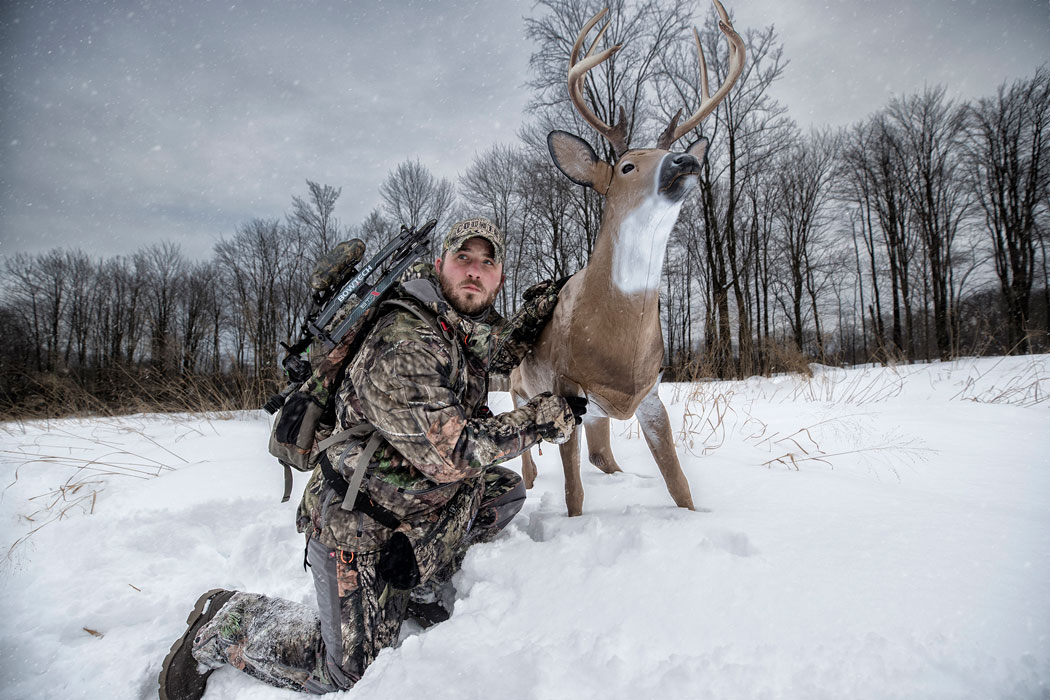
There aren’t many hard and fast rules when it comes to decoying deer; however, you can put the odds in your favor by avoiding decoying mistakes and using these tips.
1. The More Realistic The Better
Cheap decoys may work, but the more realistic looking the better.
2. Decoy Posture
Decoy posture must backup the scenario you’re trying to pull off. Some decoys look as if they’re so on edge they’re about to bolt. A feeding decoy, bedded decoy or any posture that doesn’t appear to be alert or aggressive will typically work most of the time.
3. Realistic Settings
Set up realistic settings. As an example, to depict a chase scenario you may want a more aggressive looking decoy. I like to place a small buck decoy standing over a bedded doe decoy - making it look as if they stopped to take a break. Think about how the whitetails might use an area.
4. Movement
Creating movement is key! This can easily be created with commercial tail kits, a white hanky, or a real deer tail and fishing line. I learned from the Wensel brothers to use chicken feathers. Tie a short string to either the feather or hanky and then tape the string to the decoy; this leaves it free to swing in the wind.
5. Use Scent
The use of scent and calling helps dearly with decoys. Bucks almost always drop downwind to scent-check the set-up. If they drop downwind and smell some Special Golden Estrus around your doe decoy, or some Golden Buck with your buck decoy, it helps seal the deal.
6. Set Up for The Approach
Place the decoy facing you and keep it as scent-free as possible. Most of the time two deer will approach one another with necks stretched out, nose to nose. If he approaches in this way, it should leave you with a nice quartering-away shot.
For more tips to help improve your hunting success, learn about planning your stand approach. Even if you have the best spot in the world, if you alert whitetails to your presence before you get there, it really doesn’t matter. Stand approach is an often overlooked aspect of the hunt.




























